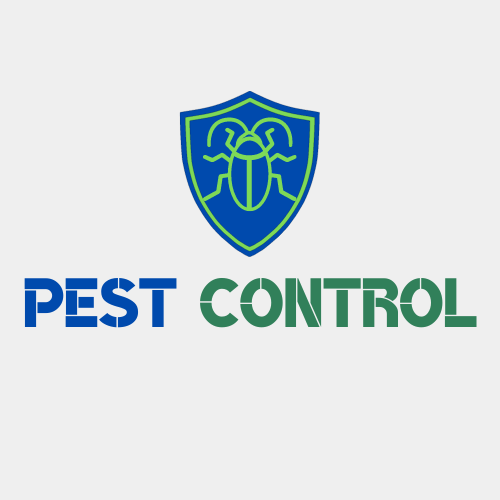Effective Pest Control Strategies for Industrial Facilities in Juárez: A Comprehensive Guide
Pest control is an essential aspect of maintaining the hygiene and integrity of any industrial facility, particularly in bustling regions like 67276 Gardenias, Juárez. With the burgeoning challenges posed by pests such as rodents, termites, and various insects, it becomes imperative to adopt a proactive approach to ensure that your operations run smoothly. This article outlines effective pest management techniques, which include vacuuming methods, rodent-proof installations, wood treatments, digital monitoring tools, and outdoor insect control measures.
The Importance of Pest Control
Pests can wreak havoc on industry infrastructure, contaminate products, and even pose health risks to employees. Therefore, an effective pest control strategy is paramount. Particularly in Juárez, where diverse climatic conditions may encourage pest proliferation, having a robust pest management plan is not just an option; it’s a necessity for compliance with industry regulations and maintaining a good reputation.
Employing Vacuuming Techniques to Remove Pests
One of the first lines of defense in pest control is to keep the premises clean. Vacuuming techniques play a crucial role in this. By employing HEPA-filtered vacuums, industrial facilities can effectively remove pests and their eggs from storage containers, carpets, and nooks that are hard to reach. Using vacuuming also reduces the chemical load of pest control methods, which is particularly important in food-grade facilities.
Furthermore, regular vacuuming has the added benefit of disrupting the life cycles of common pests. Comprehensive vacuuming routines should be established and followed consistently, focusing on high-traffic areas and locations where pests are likely to congregate.
Installing Rodent-Proof Ventilation Systems
Rodents are notorious for infiltrating industrial facilities due to inadequate ventilation systems. By installing rodent-proof ventilation systems, businesses can significantly reduce the risk of rodent infestations. These systems are designed to block entry points while still allowing for necessary air circulation.
Properly designed ventilation systems can prevent rodents from accessing electrical wiring, insulation, and stored materials. Regular inspections and maintenance should also be conducted to ensure that these systems remain effective over time.
Installing Rodent-Proof Fencing Around Facilities
In addition to ventilation systems, installing rodent-proof fencing around the perimeter of the facility is another powerful method of pest control. This fencing creates a physical barrier that restricts rodent movement. When done effectively, it can deter not only rodents but also other small animals that might seek shelter within industrial structures.
Rodent-proof fencing should be constructed from materials that are robust and resilient. Ideally, the fencing should extend underground to prevent rodents from burrowing underneath and should be regularly checked for any gaps or weaknesses.
Conducting Wood Treatment for Termite-Prone Industrial Facilities
Termites can pose a severe threat to industrial structures, especially those built with wood. Conducting wood treatment is essential for termite control and includes the application of barrier treatments and systemic insecticides. Proper treatment protects the wood from these destructive pests, ensuring the structural integrity of buildings.
Facilities in Juárez that house wooden components must implement preventative treatments as part of their pest control strategy. Additionally, it is advisable to conduct periodic inspections to identify any signs of termite activity or damage. Early detection can save businesses significant amounts of money in repairs.
Using Digital Termite Monitoring Tools for Real-Time Tracking
Technology has revolutionized pest management, and one of the most impactful advancements has been the introduction of digital termite monitoring tools. These smart systems allow for real-time tracking of termite activity, providing facility managers with immediate alerts regarding potential infestations.
Digital monitoring utilizes sensors placed strategically in areas susceptible to termite activity. The system records any movement or detection of termites and sends notifications to responsible personnel. By integrating these tools into pest management workflows, businesses can act promptly upon discovering activity, ensuring timely intervention.
Installing Insect Control Barriers in Outdoor Dining Areas
For facilities with outdoor dining areas, the installation of insect control barriers is crucial. These barriers are designed to keep pests such as flies and mosquitoes at bay, thereby enhancing customer comfort and satisfaction. Fixed screens, netting, and specially designed landscaping can work together to create an effective line of defense against unwanted insects.
Regular maintenance of outdoor barriers, including checking for any gaps or breaches, is fundamental in providing persistent protection. Additionally, using natural deterrents or traps within the controlled area can further optimize insect control efforts.
Integrated Pest Management (IPM)
An effective strategy for industrial facilities involves adopting an Integrated Pest Management (IPM) approach. IPM combines multiple techniques, including the methods discussed above, to create a comprehensive pest control plan tailored to the specific needs of a facility.
Implementing IPM entails:
1. Monitoring and Identification: Employing digital tools and regular inspections to monitor pest activity and identify species present.
2. Prevention: Using techniques such as vacuuming and establishing barriers before any infestations can occur.
3. Control: When necessary, applying targeted treatments discussed earlier in this article while using safer options to protect the environment and staff.
4. Evaluation: Regularly reviewing the effectiveness of the pest management plan and making adjustments as necessary.
Conclusion
Pest control in industrial facilities is critical, particularly in areas such as 67276 Gardenias, Juárez. By implementing a variety of techniques—including vacuuming, installing rodent-proof structures, treating wood for termite prevention, utilizing digital monitoring tools, and setting up insect control barriers—businesses can create a comprehensive strategy that addresses pest management holistically.
When combined with an Integrated Pest Management approach, these techniques not only safeguard property and products but also contribute to increased employee safety and customer satisfaction. Investing in effective pest control is not merely a matter of compliance; it’s a cornerstone of operational excellence and sustainable business practices in the industrial sector.
